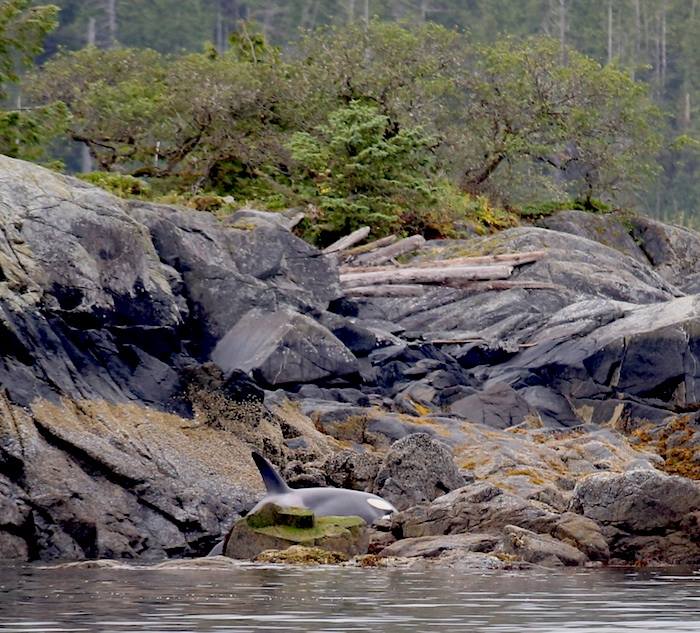|
|
Rescuing Beached Orca Whale
|
Killer whales hunt varied prey; however, different populations/species tend to specialize and some can have a dramatic impact on certain preyed species. For example, some populations in the Norwegian and Greenland sea specialize in herring and follow that fish's autumnal migration to the Norwegian coast. Other populations prey on seals. Salmon account for 96% of northeast Pacific residents' diet. 65% of them are large, fatty Chinook. Chum salmon are also eaten, but smaller sockeye and pink salmon are not a significant food item. Depletion of specific prey species in an area is therefore cause for concern for local populations, despite the high diversity of prey. On average, a killer whale eats 227 kilograms (500 lb) each day.
Because some killer whales prey on large whales and sharks, they are considered to be apex predators. They are sometimes called the wolves of the sea, because they hunt in groups like wolf packs.
• Fish and other cold-blooded prey
Fish-eating killer whales prey on around 30 species of fish, particularly Chinook, salmon, herring, and tuna. In New Zealand, rays are killer whales' most frequent prey, and they have also been observed hunting sharks (particularly makos, threshers and smooth hammerheads). Squid and sea turtles are also taken.
|
|









